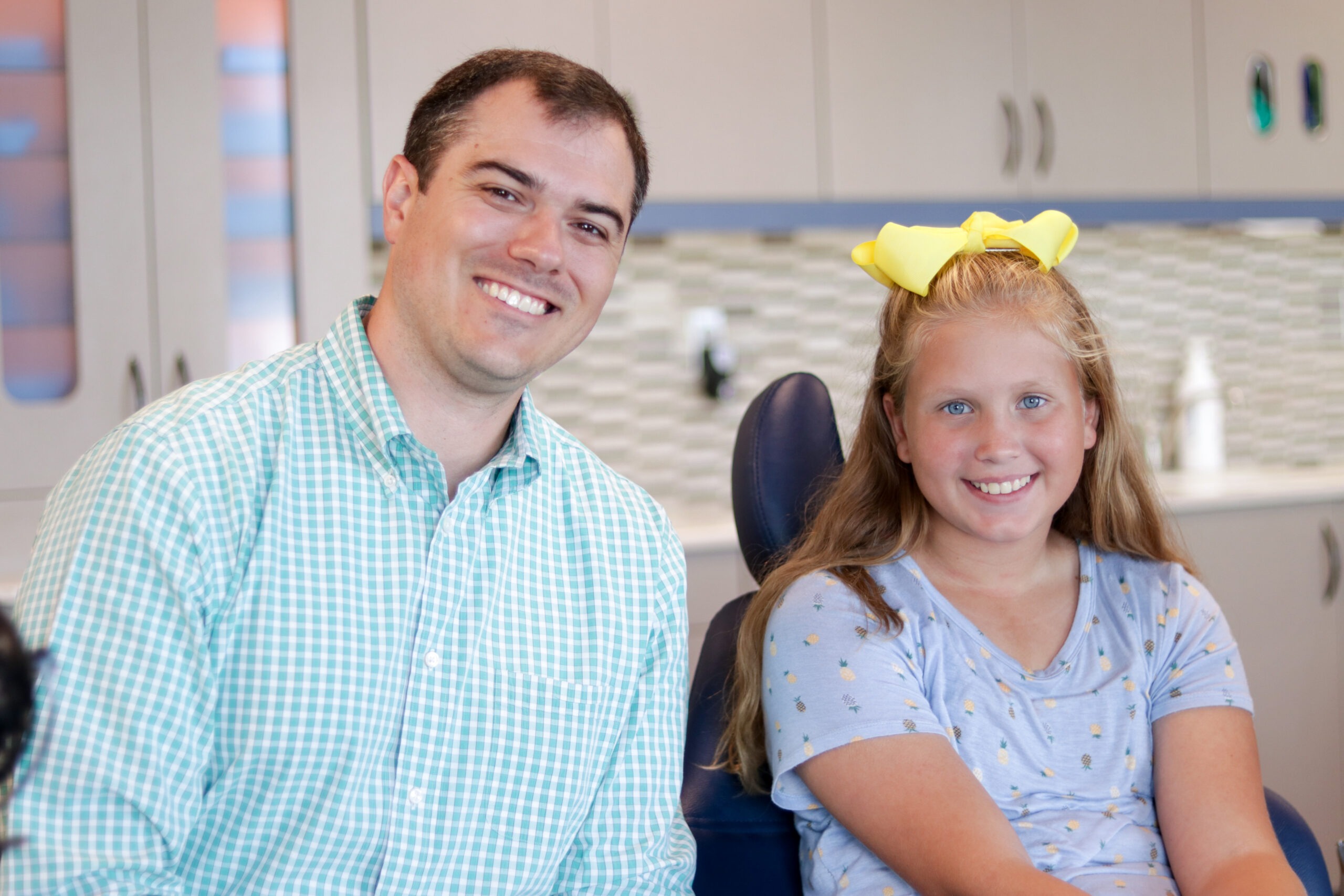Orthodontic journeys often begin in childhood, and at Designer Smiles by Benton, we’re dedicated to guiding our youngest patients through every step. One pivotal aspect of pediatric orthodontics is the Two-Phase Treatment. Understanding this approach is crucial for parents and kids alike. Today, we will explain the process and treatment options used during two-phase treatment, ensuring that both parents and children are well-informed and confident as they embark on the path to a flawless smile.
What Is Two-Phase Treatment?
Two-phase treatment is administering orthodontic care in two phases that perform critical processes to improve your child’s smile’s health, function, and appearance. The first phase typically begins around ages 6 to 10, when some dental issues are easier to address due to the malleability of a child’s jaw and the presence of both primary and permanent teeth. By intervening at this early stage, orthodontists can harness natural growth patterns, making subsequent treatments in adolescence (Phase Two) smoother and often less extensive. This proactive approach ensures timely intervention, setting the foundation for optimal oral health and a radiant smile in the future.
Phase 1
The goal of the first phase of treatment is to ensure the mouth has plenty of space to accommodate incoming adult teeth and improve how the two rows of teeth align when touched together. What orthodontic equipment your child needs to achieve this goal depends on the severity of the issue that needs improvement, but popular options in Oxford and Pell City include:
Growth Modification
Among the most common is the palatal expander, designed to widen the upper jaw and create more space for teeth to align correctly. This device can correct crossbites and prevent overcrowding to assist permanent teeth in finding their desired locations.
Headgear is another growth modification tool, though less commonly used today. It addresses bite issues by controlling how the jaws grow. Depending on the type of headgear and its intended purpose, it can either hold back the growth of an upper jaw or encourage the forward development of a lower jaw.
Limited Braces
Some children could benefit from limited braces applied to specific problematic teeth. These braces can correct issues like significant misalignment or rotation in preparation for the next phase. (For more information about our braces, see Phase Two below.)
Space Maintainers
Many children lose their baby teeth prematurely due to accidents or dental decay. In such cases, space maintainers play a crucial role. These instruments ensure that the space left by a lost tooth remains open, allowing the permanent tooth to erupt in its correct position. Without these, neighboring teeth might drift into the vacant space, leading to alignment problems.
Habit Devices
Certain childhood habits like thumb-sucking or tongue-thrusting can adversely impact dental development. Habit appliances deter these behaviors for better alignment development. For instance, a habit device placed on the roof of the mouth can prevent children from finding comfort derived from thumb-sucking, helping them break the habit.

Phase 2
After a resting period of a few years, where the remaining permanent teeth are allowed to erupt naturally, Phase Two commences. This phase is about refining the work done in Phase One, ensuring that every tooth position is optimal for both function and aesthetics. Dr. Benton and Dr. Barry will help you determine which is best for your child based on their needs and lifestyles, but let’s check out the options so you can make an informed decision.
Full Braces
The cornerstone of Phase Two is often the application of full braces. While many people are familiar with traditional metal braces (which have only improved over the years), advancements in orthodontics have introduced more discreet options. Damon clear braces, for instance, offer the same functionality as their metal counterparts but with a more aesthetic appeal. We also provide LightForce, which are 3D-printed clear braces where each bracket is uniquely designed for your child’s teeth.
All the above options are fixed braces, which means your child cannot remove them. They will need to modify their diet and oral hygiene routine to accommodate the unmoveable appliance, but the changes are minor, and we feel confident they will quickly adjust.
Clear Aligners
Clear aligners present an excellent alternative for those who prefer an even more unnoticeable option. Brands like Invisalign, Spark, and Boost clear aligners have revolutionized orthodontic treatment, offering a series of comfortable transparent trays custom-made for each patient so they can specifically target your child’s needs.
Clear aligners are removable, so your child will not have to quit their favorite foods or relearn their oral hygiene routine.
We usually recommend clear braces and clear aligners to teens with less complex cases. Because they are less sturdy and require more maintenance than metal braces, we strongly encourage you and your child to realistically consider the responsibility of these appliances before choosing.

7Up Kids Club
Need help to determine if your child needs treatment? Wary about spending lots of money on check-ups until they do need care? Don’t worry! The Designer Smiles Kids Club, crafted by Dr. Benton and Dr. Barry, is a cost-free program tailored for children not yet ready for orthodontic treatment. Our orthodontists will monitor alignment development and tooth eruption to pinpoint the ideal treatment start time. This supervision ensures optimal outcomes and saves you money — everything is free until your child needs or begins care! Plus, during their six-month check-ups, kids get to spin a prize wheel to win exciting prizes!
Designer Smiles By Benton Can Craft Your Child’s Perfect Smile!
Every child’s smile is unique, and the journey to perfection begins with the proper guidance. Dr. Benton has been practicing since 1985, and his son, Dr. Barry, has spent his entire life learning about orthodontics. Your child is in experienced, capable hands! Don’t leave their smile to chance — schedule a free consultation with us in Oxford or Pell City today, and let’s chart the best path to your child’s radiant future smile.


